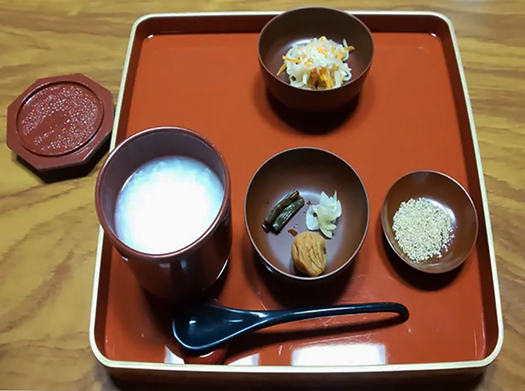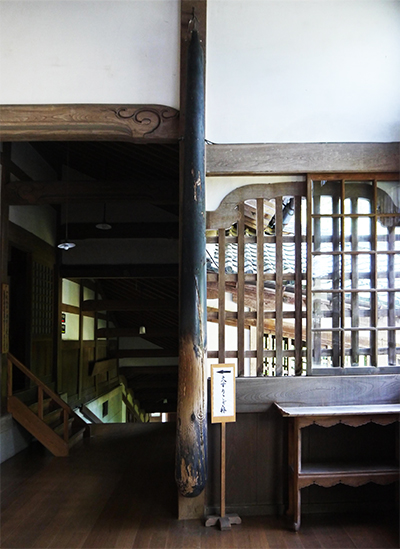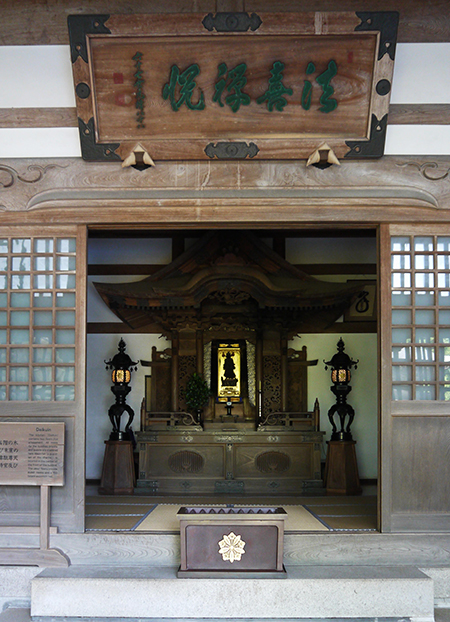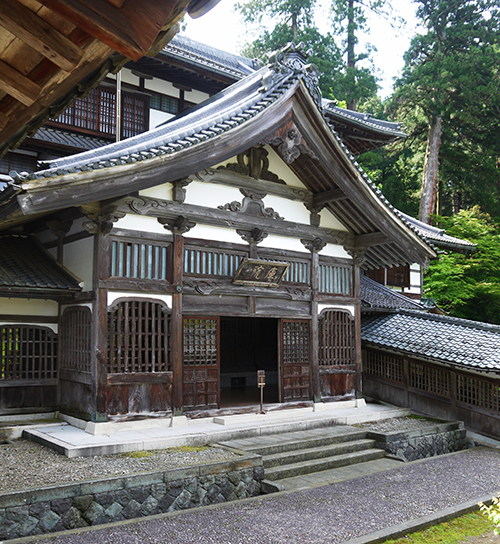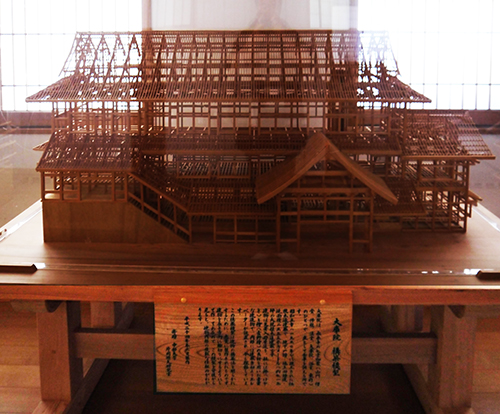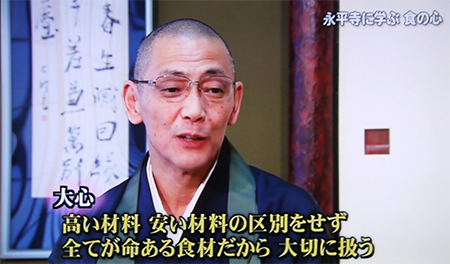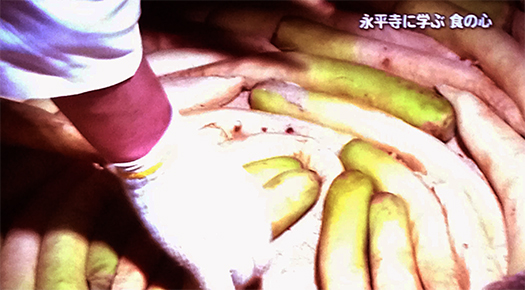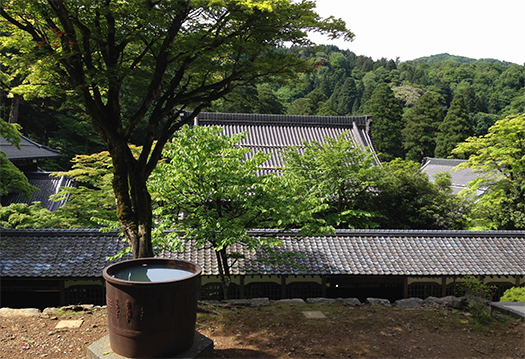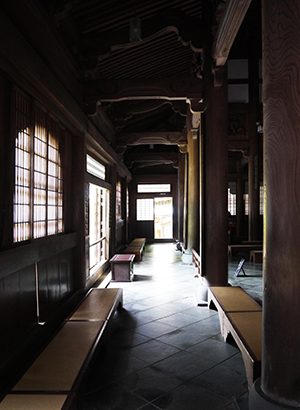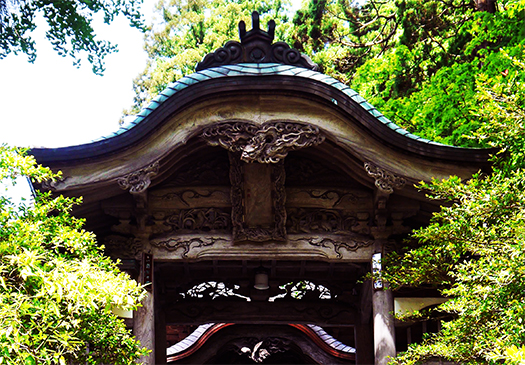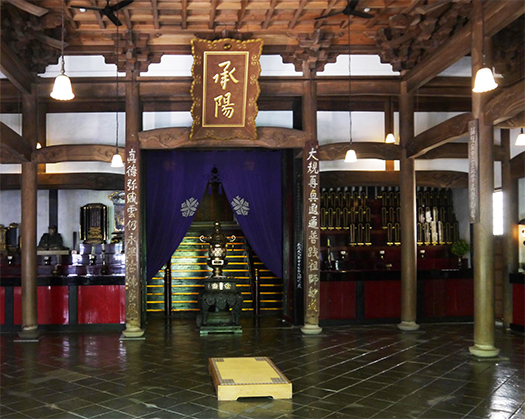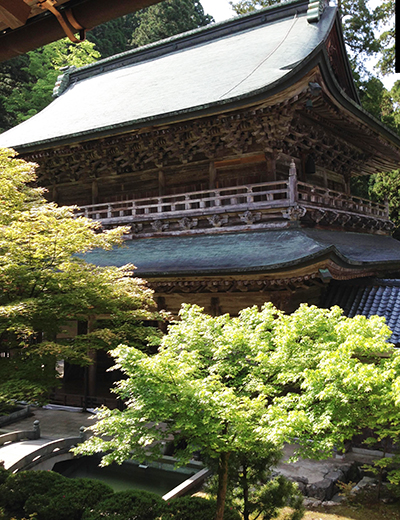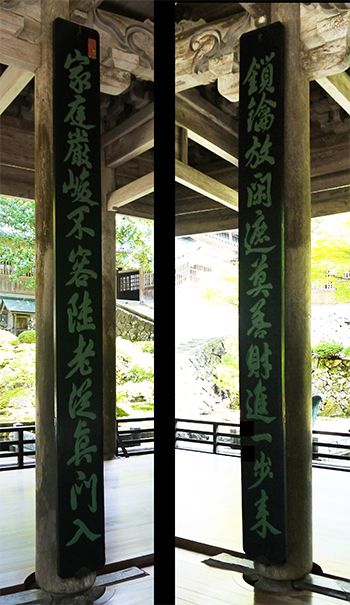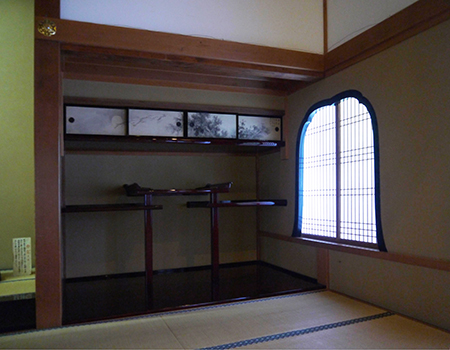


宗祖・道元さんの人物伝的把握から精進料理の発祥までみてきました。
日本人の中で永平寺というイメージは大きく強い影響をもたらしてきた。
禅寺としての「修行の場」ということから多くの僧が
そこで暮らし、学ぶという印象が強い。
で、たくさんの建築群が歴年、建築され続けてきたけれど、
参観に行くとそうした僧侶達の修行中の移動列に出会うことも多い。
朝課という毎日のイベントについては触れたけれど、
いろいろな建築の間を移動する様子にも出くわすことが多いのですね。
必然として総建築面積に比例して「移動空間」もたくさん出来上がっていく。
記憶からは主要な建築群はすべて回廊で連結されていたように思う。
この永平寺では起伏に富んだ敷地地形に沿って
上り下り、平坦といった変化に満ちた移動空間が現出している。
参観途中も多くの僧に出会うことからかれらの日常移動が趣旨であって
参観者・観光客のための便宜を第一に考えたものではなさそう。
同じ曹洞宗の鶴見・總持寺でもこうした移動回廊が多い。
ふつうの住宅建築ではほとんど顧みられなくなった、回廊。
こうした参観機会で集中的に体験できるのは稀有なことだと思う。
永平寺では「一文字廊」という名前まで付いている「建築」がある。
まことに「用」の空間そのものだけれど、わたし的には
建築のひとつの典型として楽しく体験させてもらった。
写真で見るように自然の敷地形状・条件に準拠しているので
自然環境と建築との「応答」感が強く感じられ、また多くは窓が開けられ
周辺の森の情景が豊かに視界一杯に広がってくれる。
都市住宅ではいまや希少価値になって来たような自然との応答。
住宅建築はふつうはひとの定置が存在意義だろうけれど、
回廊空間とは、ひとが移動するための建築。
それが一気にたくさんの建築的表情を見せてくれることになる。
いわば木造建築的メリーゴーランドのような印象が深い。
あるいはローラーコースターやスライダーみたいな
空間体験にも繋がっているようで面白い。
ひとが自然環境の中に住む、という意味の中に
周辺環境との「応答」の部分って大きいだろうと思っています。
四季変化というものは人間の感受性を大きく彩ってくれる。
永平寺は温暖地だけれど、冬期には寒冷で降雪も多い環境。
そういった彩りが人間に多くの刺激を与えて、こころを育んでいく。
道元さんはこの地の空気感に深く根がらみのものを感じて
鎌倉幕府の招聘をも辞退したのではないか、
回廊空間には永平寺を包む「場の空気」そのものが息づいている。
English version⬇
[Corridor space connecting architecture Eiheiji-13]
We have seen from the biographical understanding of the founder Dogen to the origin of vegetarian cuisine.
The image of Eiheiji among the Japanese has had a great and strong influence.
Many monks from the existence of a “place of training” as a Zen temple
The scenery of living and learning there overshadows the impression.
So, many buildings have been built for many years, but
When I go to visit, I often meet a line of such monks.
I mentioned the daily event called the morning lesson, but
You often come across the appearance of moving between various buildings.
Then, a “moving space” will be created in proportion to the building area.
From my memory, I think that all the major buildings were connected by a corridor.
At this Eiheiji Temple, along the rugged site topography
A moving space full of changes such as ups and downs and flatness is emerging.
The purpose of meeting many monks during the visit is their daily movement.
It does not seem to be the first consideration for convenience for visitors and tourists.
There are many such mobile corridors in Tsurumi and Sojiji of the same Soto sect.
A corridor that is rarely looked after in ordinary residential construction.
I think that it is a rare experience to experience intensively at such a visit opportunity.
At Eiheiji Temple, there is an “architecture” that even has the name “Ichimonjiro”.
It’s really a “useful” space, but for me
I had an interesting experience as a typical example of architecture.
As you can see in the photo, it conforms to the natural site shape and conditions.
There is a strong sense of “response” between the natural environment and architecture, and many windows are opened.
The scenery of the surrounding forest is abundant and spreads out to the full.
In residential construction, stationary is usually the reason for existence, but
Corridor space is an architecture for people to move.
It will show a lot of facial expressions at once.
It has a deep impression like a wooden architectural merry-go-round.
Or like a roller coaster or slider
It is interesting because it seems to be connected to the space experience.
In the sense that people live in the natural environment
I think that the “response” part with the surrounding environment will be large.
The change of the four seasons greatly colors human sensitivity.
Eiheiji is a warm region, but it snows a lot in winter.
Such colors give a lot of stimulation to human beings and wrap their hearts.
Dogen-san feels deeply rooted in the atmosphere of this area.
Maybe he declined to invite the Kamakura Shogunate.
In the corridor space, the “air of the place” that surrounds Eiheiji is alive.
Posted on 12月 10th, 2021 by 三木 奎吾
Filed under: 住宅マーケティング, 日本社会・文化研究 | No Comments »


